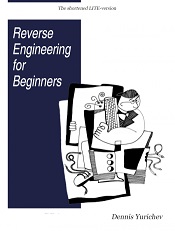Reverse Engineering for Beginners

Reverse engineering is the process of examining a finished product to determine how it works and how it was made. It involves taking something apart and analysing its components in order to understand its design and functionality. The process of reverse engineering can be applied to a variety of products, from simple machines to complex electronic devices.

There are three main types of reverse engineering:

- Software: This is the process of extracting the source code of a software product from its compiled form.
- Hardware: This is the process of studying the internal details of hardware, such as circuit boards and microchips.
- Design: This is the process of inferring the design specifications of a product from its physical construction.
Steps to Reverse Engineering Product:
- Disassemble the Product: Carefully take apart the product into its individual components. Document each step, including the order in which the components were disassembled.
- Analyse Components: Identify and examine each component, including its function, purpose, and material of construction. Note any specific markings, serial numbers, or symbols.
- Reconstruct the Product: Reassemble the components to understand the overall structure and functionality of the product. Consider the connections and relationships between the components.
- Document the Findings: Create detailed documentation of your analysis, including notes, diagrams, and photographs. Document any inferences made during the process.
Tools and Techniques of Reverse Engineering
The tools and techniques used in reverse engineering vary depending on the type of product being analysed. For example, disassembling a software product might require a compiler or a disassembler, while examining hardware might necessitate the use of tools like microscopes, probes, and logic analysers.
Applications of Reverse Engineering
Reverse engineering has various applications in different industries, including:
- Product Development: Understanding how existing products work can inspire new designs and improvements.
- Troubleshooting: Reverse engineering can help identify and resolve issues or malfunctions in a defective product.
- Security: Analysing the internal workings of a system can identify vulnerabilities and security risks.
- Preservation: Documenting the design of obsolete or rare products can ensure their preservation and understanding for future generations.## Reverse Engineering For Beginners
Executive Summary
Reverse engineering is the process of taking something apart and analyzing its workings in order to create a duplicate or to gain a better understanding of how it functions. For many people, reverse engineering is an exciting and challenging hobby. It’s also a valuable skill in a variety of fields, such as engineering, manufacturing and software development.
Introduction
Reverse engineering can be applied to a wide variety of objects. Some of the most common include:
- Products that already exist in the marketplace, both hardware and software products.
- Complex systems
Processes
Algorithms
FAQ
-
Q: What are the benefits of reverse engineering?
A: Reverse engineering can provide a number of benefits, including:
Gaining a better understanding of how something works.
Identifying areas for improvement.
Creating a duplicate of an existing product.
Developing new products or services. -
Q: What are the challenges of reverse engineering?
A: Reverse engineering can be a challenging process, especially for complex systems. Some of the challenges include:
Gathering enough information about the system.
Understanding how the system works.
*Creating a duplicate that is as good as or better than the original. -
Q: What tools are available for reverse engineering?
A: There are a number of tools available for reverse engineering, including:
Hardware and software tools.
Computer-aided design tools.
*Simulation tools.
Subtopics
- Disassembly
Disassembly is the first step in reverse engineering – it’s the process of taking something apart, and it must be done carefully to avoid damaging the object. The disassembly process can be applied to both hardware and software systems, and it requires a high level of understanding how the system is put together. - Analysis
Disassembly gives you a good idea about how a system works, but it’s not a complete picture. You should also analyze the system – determine how it functions. Is it software or hardware? How does it process data? What are its inputs and outputs? Understanding these questions will give you a better idea about how the system works, which is an important step in the reverse engineering process. - Documentation
As you disassemble and analyze the system, you should also document your findings. This is important for several reasons: - It helps you to remember all of the information that you have gathered.
- It makes it easier to share your findings with others.
*It can be used to create a duplicate of the system. - Reconstruction
Documentation is the foundation of reconstruction, the process of creating a duplicate of the system that you have reverse engineered. The reconstruction process can be done in a few different ways, depending on what your ultimate goal is. If you are trying to create a duplicate of a hardware product, you will need to have a high level of expertise in manufacturing engineering. If you are trying to create a software product, a high level of expertise in software development is required. - Testing
After creation, testing is required to make sure that the system works properly. The testing process can be time-consuming and complex, but it is essential to ensure that the system meets your requirements.Conclusion
Reverse engineering can be a complex and challenging process, but it can also be very rewarding. By following these steps, you should be able to reverse engineer any system, irrespective of complexity.
